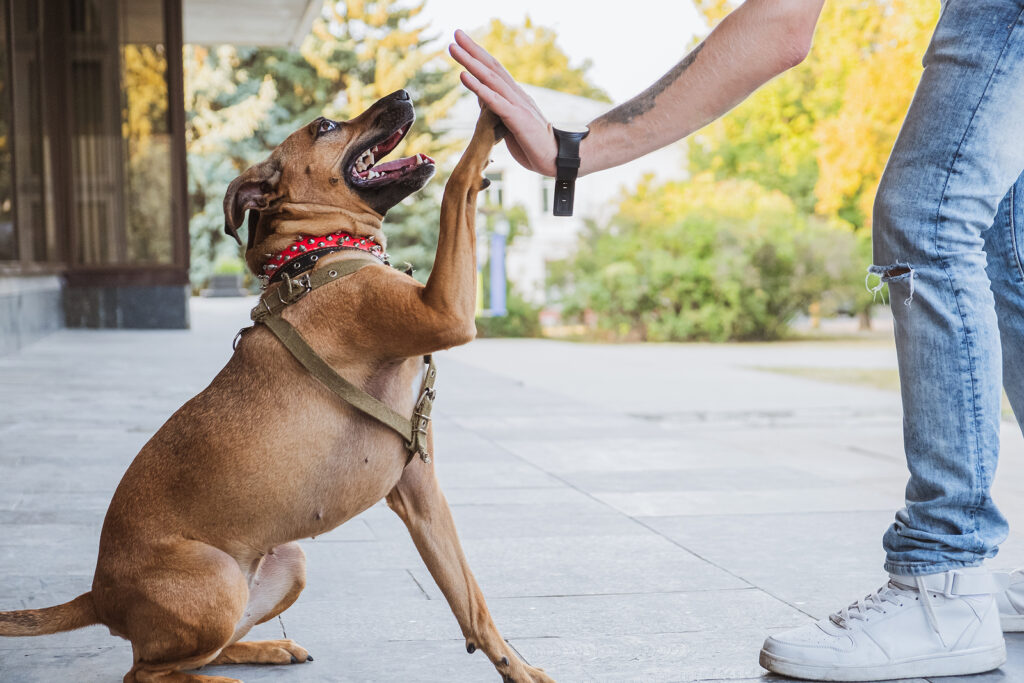So you’ve brought home your new best fur-friend, but their manners are not the best. How do you get your new puppy, rescue or new adult friend to listen? There are seven basic commands you should to teach to your pup to help them become an obedient companion: Sit, Down, Stay, Come, Heel, Off and No.

1. Sit
Sit is the first command you should teach your dog because it’s also the most natural for most dogs. Even pets with little to no training can master the sit command within a few training sessions. Sit also serves as a great transition command, meaning once a dog learns to sit they can learn other commands easier.
2. Down (or Lay Down)
Teaching your dog down is teaching them to be still. It’s an important command to teach your dog patience and rest. A standing dog has freedom of movement, and could run on you at any moment! Likewise, a sitting dog is simply one step away from jumping up. Down or lay down helps you maintain control, and like sit serves as an important transition command.
3. Stay
When a dog learns stay they are learning self control. The stay command also helps you protect your dog from itself. A dog who stays is less likely to run into the street or a neighbors yard if they get loose. Stay is easier to teach when your dog is hungry or tired and are less focused. The stay command can take a few days to learn and weeks to master, so be patient and be ready to reward good behavior.
4. Come
When you’re ready to relax you’ll want to be able to call your best friend over to share the moment with you. However, more importantly come teaches your dog to listen and stay close. Outdoor activities, social time at the dog park, or relaxing at home make come a must know command for your dog. Come is best learned after stay and makes the command easier for your dog to learn.
5. Heel
When your dog learns to heel, they learn to keep pace with you and to stay by your side. If you have a dog that loves to pull on the leash and outpace you on walks or runs, or a big dog that is a little too much to handle the heel command is crucial. If you walk in crowded areas or live in a city heel can help calm anxieties about being out and about with your pup.
6. Off
You get excited, the dog gets excited. But sometimes the enthusiasm of your fur-friend can be a bit too much. Off helps teach your dog boundaries. When your dog jumps up, an easy way to teach off is by grabbing their paws when they jump and shaking something to make noise while giving the command “off!”
7. No
We hate to hear it, your dog hates to hear it, but we all need boundaries. No is an all-purpose command for everything you don’t want your dog to do.
Once your dog has mastered the seven basic skills you and your pup will be able to live in harmony and focus on your adventures, or more complex tricks and training!